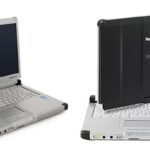This guide provides a detailed walkthrough for installing Mercedes DAS Xentry 2017 from a disk image. While aimed at users with basic computer skills, it offers a comprehensive approach to setting up the diagnostic software. This version, specifically the 07.2013 FULL release, serves as a foundation for later updates (01/03/05 2013 and onward) and is compatible with subsequent full versions like 01.2014 through 12.2014.
Preparing for Installation
Before starting the installation process, ensure you have the following:
- Windows XP Installation Disc: A clean installation of Windows XP is recommended. You can use a Windows XP image with AHCI support.
- Mercedes DAS Xentry 2017 Disk Image: Obtain the 2017 (specifically 07.2013) disk image, often referred to as “Mercedes Das Xentry 2017 образ диска” in Russian forums. This will likely be a multi-part archive you’ll need to extract.
- Virtual CloneDrive (or DVD Burner/Discs): This allows you to mount the ISO image as a virtual drive. Alternatively, you can burn the image onto DVDs.
- GuideV8 Finish and StarPostinst Utilities: These tools are crucial for a successful installation. You will need to locate and download these separately, often from online forums dedicated to Mercedes diagnostics.
- DAS/WIS/Xentry Keys: You will need valid activation keys for the software to function correctly.
- Drivers: Gather all necessary drivers for your hardware, including USB and COM port drivers (especially important for older “brick” interfaces). Drivers for SDConnect devices are also essential for newer vehicles.
- Hardware: You will need a compatible diagnostic interface, either a Multiplexer (older “brick”) or an SDConnect. If using an older interface, a USB to COM adapter based on the FTDI chipset is strongly recommended for stability.
Step-by-Step Installation Guide
-
Install Windows XP: Install Windows XP on your computer. Allocate disk space as follows: C: (25-40GB), D: (5-10GB), E: (35-50GB), F: (40-100GB). Login as “administrator.” Choose the Russian language during installation for automatic system language configuration.
-
Format Partitions: Format the logical partitions using the Windows formatting tool during the installation process. Naming the drives is optional as the guide will handle this automatically.
-
Driver Installation: Install all necessary hardware drivers. After installation, reboot and log in as user “star”. Install USB and COM port drivers under the “star” user account as well. Create the “star” user during the Windows installation.
-
Virtual CloneDrive Setup: Install Virtual CloneDrive and assign it the letter G:. Disable or change the letter of your physical DVD drive beforehand. Reboot. This step can be skipped if using physical DVDs.
-
Prepare Utilities and Image: Place “GuideV8 Finish” and “StarPostinst” on the D: drive. Mount the DAS/Xentry disk images, preferably from an external drive, using Virtual CloneDrive or a DVD.
-
Run GuideV8 Finish: Execute the “GuideV8 Finish” utility. This will prepare the system for the DAS/Xentry installation.
-
Apply Patch and Keys: After “GuideV8 Finish” completes, use “DasHWID_Patch” to change the Hardware ID to 250. Utilize “StarUtilities/StartKey Center” to input your DAS/WIS/Xentry keys. Set the computer date one month ahead of the DAS/Xentry release date.
-
Start StarSetup: Run “StarSetup” from the mounted DVD or virtual drive.
-
Follow Installation Prompts: Proceed through the on-screen instructions of the installer.
-
Finalize Installation: After the installation of both discs, do not click “Finish.” Run “StarPostinst” and then click “Finish.”
-
Optimize System Performance (Optional): For slower hardware, consider disabling antivirus software and system restore (disk monitoring) to improve performance. Using Virtual CloneDrive is recommended for newer versions (01.2014 onwards).
Additional Notes
- BIOS Compatibility: Versions from 03.2013 onwards check for BIOS compatibility. Modifying the BIOS is risky. The recommended “Guide V5_0” and later versions address hardware checks automatically.
- Error 5011: When installing the 09.2013 update, you might encounter Error 5011. This can be resolved by setting the system date back to September.
- “Brick” Interface Support: While the base installation is intended for SDConnect, applying the correct fixes enables compatibility with older Multiplexer interfaces (“bricks”). However, flashing the PIC microcontroller in the “brick” with a modified firmware is the most reliable solution, eliminating the need for error fixes (870 and 872) and ensuring compatibility with both “bricks” and SDConnect.
- Wi-Fi Connection: For “brick” users, establishing a Wi-Fi connection involves specific configurations within the device and on the computer. Consult dedicated guides for detailed instructions.
- FTDI Chipset: When using a USB to COM adapter with a “brick,” ensure it utilizes the FTDI chipset for optimal performance and stability. Avoid using cheaper CH340 based adapters.
This comprehensive guide provides the necessary steps for installing Mercedes DAS Xentry 2017. Remember to consult the included PDF documentation for visual aids and further clarification. Remember that accessing and using this software requires proper licensing and authorization.

